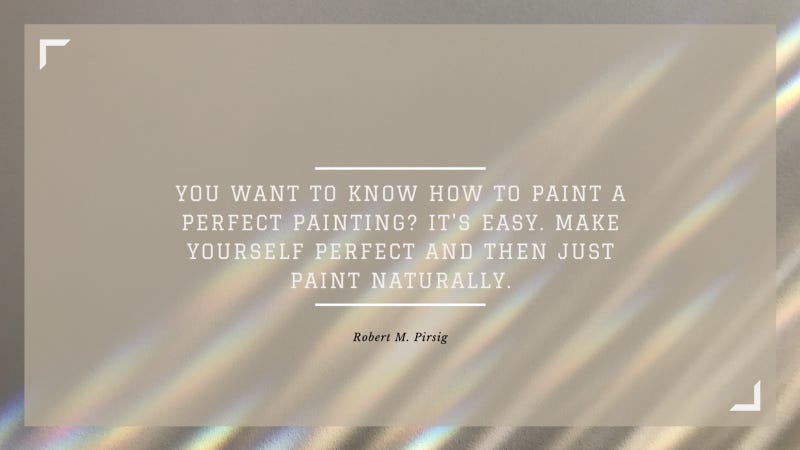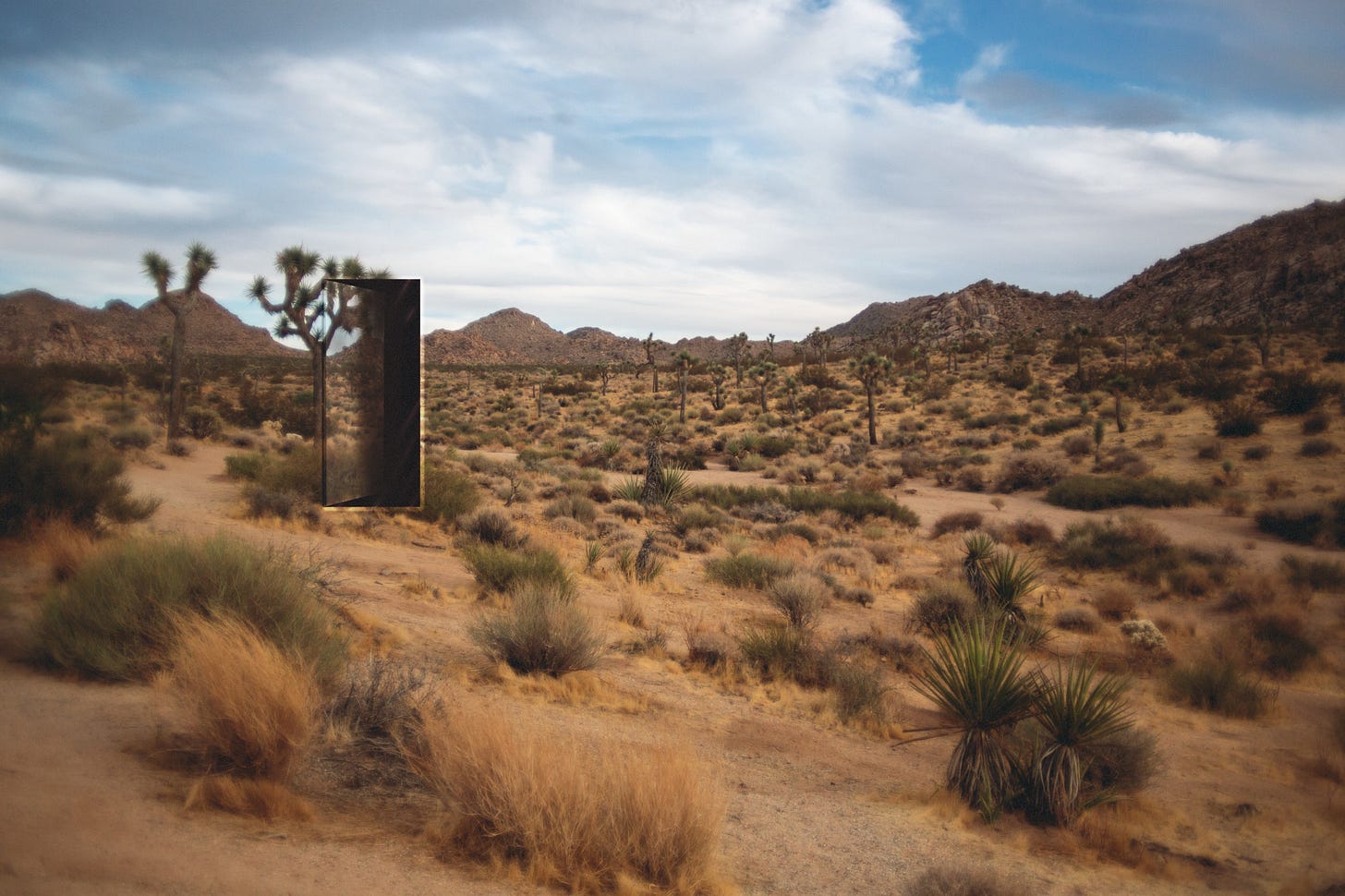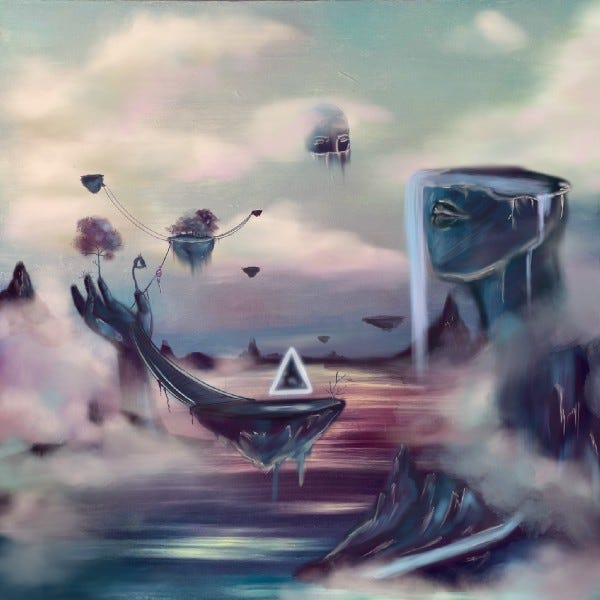This one shift changed the way I create
I’m prepping my canvas to paint a futuristic landscape scene that I made on my iPad. I get the paint ready and stare at the canvas. And I stop.
It’s been sitting there for over a month without me attempting to work on it. Why? I keep telling myself I don’t know the rules to painting.
I’ve never painted something in a surreal way and I’ve gotten in my head about the technique of how I’m meant to create the image I want.
I do the same thing with writing. I’ll start imagining a story, see the whole plot laid out, feeling like I’m fully experiencing the story. But, when I sit down to write it, my fingers won’t type because I tell myself that I don’t know the rules for writing.
I didn’t get formal training in art or in writing, but I’ve been doing both since I was a kid. There isn’t a time in my life that I wasn’t creating something.
But, that formal training stumps me sometimes.
I get worried that none of my paintings are actually finished or that my writing is never ready because I am missing something that formal training promises to teach me.
And then I was reading Robert M. Pirsig.
In his book, Zen and the Art of Motorcycle Maintenence he reminds me of something that is so simple, so true, yet I had been missing.
It’s an old split. Like the one between art and art history. One does it and the other talks about how it’s done and the talk about how it’s done never seems to match how one does it.
He goes on to discuss how education teaches the rules of these processes, yet fails to express that these rules were created after the creation.
Van Gogh didn’t develop the rules of post-impressionism while he was painting “Starry Night,” nor did Hemingway express the process of his terse writing style while creating The Old Man and the Sea. It seems we are so consumed with the imitation of the greats, that we forget that the rules and processes of works are not written by the ones that did the creating.
They did not concern themselves with the exact processes and rules of rhetoric or painting while in the process of creating the masterpieces we regard as blueprints for greatness today.
As a result of his experiments he concluded that imitation was a real evil that had to be broken before real rhetoric teaching could begin. This imitation seemed to be an external compulsion. Little children didn’t have it. It seemed to come later on, possibly as a result of school itself.
That sounded right, and the more he thought about it the more right it sounded. Schools teach you to imitate. If you don’t imitate what the teacher wants you get a bad grade. Here, in college, it was more sophisticated, of course; you were supposed to imitate the teacher in such a way as to convince the teacher you were not imitating, but taking the essence of the instruction and going ahead with it on your own. That got you A’s. Originality on the other hand could get you anything — from A to F. The whole grading system cautioned against it.
This isn’t to say that I think education is useless nor is this to look down on anyone that has formal training.
But, while reading Pirsig, I was reminded that it isn’t about mimicking the greats in order to achieve greatness but to be so invested in what you believe in and what you are building, that the rules mean nothing to you in that moment.
I know I’ve experienced that feeling before. That state of flow where the act of living is so insignificant in comparison to what you are creating in that moment. You go into a tunnel vision and feel as if you are standing within the very thing you are creating; that you are one and the same.
I think that’s what education misses. That feeling of overwhelming passion is not something that can be taught in a process or rulebook. It is something that we must nurture and grow within ourselves; that education may offer prompts to growing it, but should not limit how it is meant to look.
Reading this also brought me back to another idea.
When I was learning to draw, I had read that it’s not about drawing the subject, but rather the not-subject.
What I mean is, if you were to try to draw a hand, your mind would have an idea of what a hand is meant to look like. And oftentimes, you would fail because your mind is trying to tell you what a hand is. So you draw a “hand,” which usually turns out to be a frustrating child-like drawing of a hand, no better than if you plastered your hand onto the paper and drew the outline.
But, when you deconstruct the subject, and focus on the parts that are not the hand. The shadows, the shapes, the little indentations, you begin to create what you are actually seeing, not the idea of the thing you are viewing.
And that is why drawing hands is so frustrating. We look at our hands every day so we think we know how a hand is meant to look. It isn’t until we let go of this idea of it, that we can start to create it. It goes against the very structure of how we are taught.
We are taught how a paper is meant to be read. We are taught how a paintbrush is meant to be used. We are taught how all of these tools and things are meant to be utilized and crafted without understanding the non-versions of each.

What if you put a paintbrush in your non-dominant hand and did whatever came naturally? What if you wrote upside down, or horizontally, going against the lines on the page? What would happen now? Is that wrong because it is wrong, or is it wrong because we are so conditioned to the idea of what is right?
Systems are wonderful. Looking at what made something a universal masterpiece is a great way to identify this quality that human nature seeks. But, maybe we can release our desire to imitate, crafting our own process and rules, instead of focusing so much on following the process of others.
Now, I try to use the greats as a way to assess how I feel about my own process. I don’t actually like Hemingway’s style of writing, which is completely okay. It helps me see what is actually important to me and how I want to create.
It’s okay to not like what others refer to as amazing. It’s okay to not enjoy pointillism, or iambic pentameter. Seeing what you like above all else is how to get unstuck, at least in my opinion.
Don’t focus on the “how” to create your own masterpiece; let the history books discover what the rules were for how you discovered your own unique voice.
To Support My Work
Follow me on Twitter and Instagram for podcast updates. Listen to past episodes on Apple Podcasts and Spotify.
Check out my website
Books I recommend: https://bookshop.org/shop/talularose





